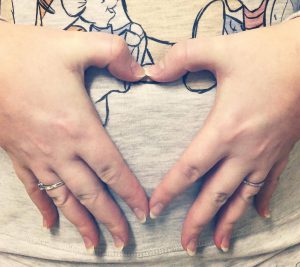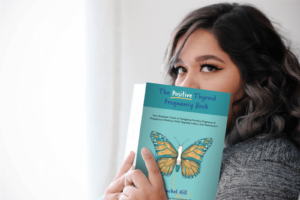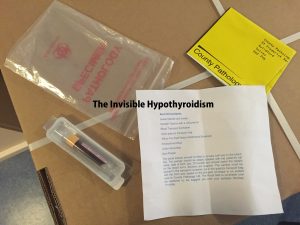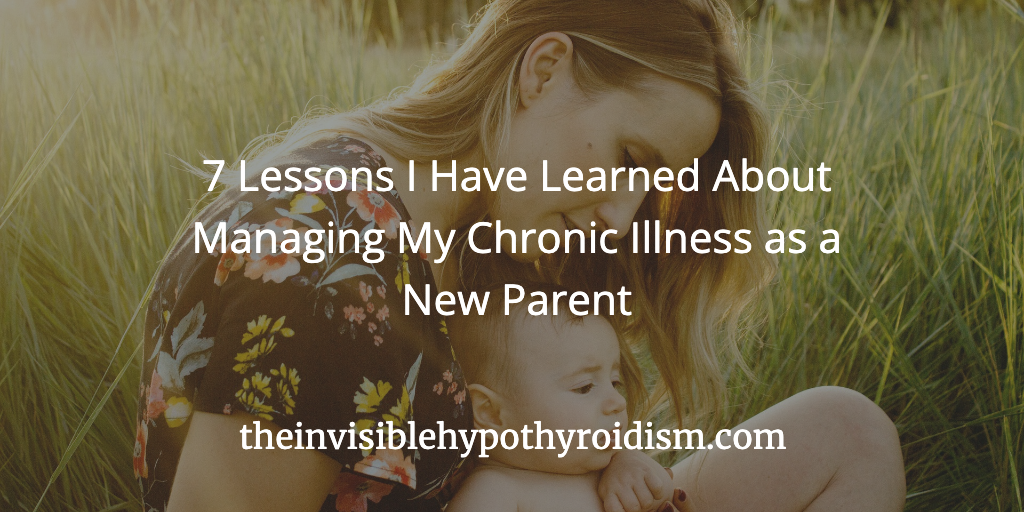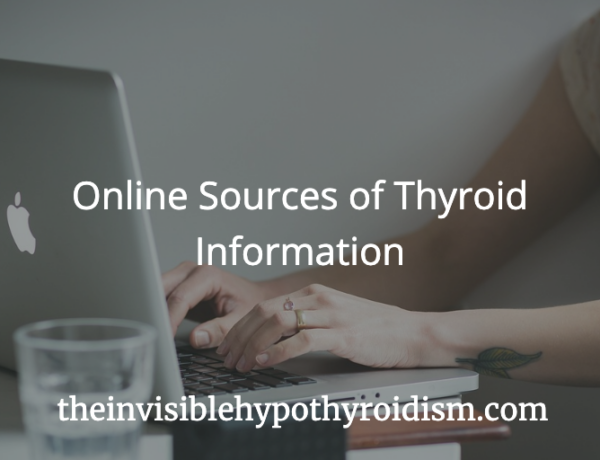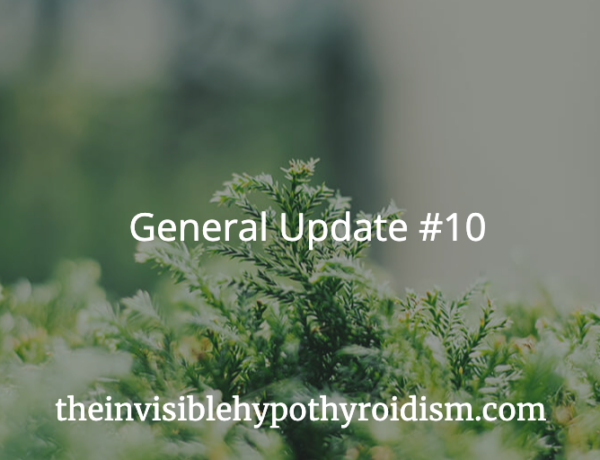Originally published on 11th August 2020 Last updated on 7th August 2024
Many people with hypothyroidism and Hashimoto’s worry about getting through a healthy pregnancy with their thyroid condition.
I am often asked what I did to promote looking after both mine and my babies’ health during my own pregnancies.
If you’re not yet pregnant, then this article may be more suitable to you: 11 Things I Did to Optimise Conceiving With Hashimoto’s and Hypothyroidism
This post will look at what I did once I was pregnant.
What I Did to Encourage a Healthy Pregnancy Whilst Having Hashimoto’s and Hypothyroidism
Don’t forget that The Positive Thyroid Pregnancy Book: Your Essential Guide to Navigating Fertility, Pregnancy & Postpartum Wellness With Hypothyroidism and Hashimoto’s also covers my two pregnancies with hypothyroidism and Hashimoto’s in a lot of detail, while also compiling ALL the info you need to know for the best start for you and your baby.
1. I Confirmed My Pregnancies As Soon As Possible
I confirmed both of my pregnancies at four weeks gestation. This is when your period is usually due.
Besides trying to conceive and so having an inkling that I may be pregnant, other signs I had were:
- Missing my usual pre-period symptoms (light cramping, migraine)
- Dizzy spells
- Night sweats
- and feeling very emotional
I took a home pregnancy test as soon as I suspected I was pregnant and there it was – pregnancy confirmed. By confirming it nice and early, I could book in to see my doctor as soon as possible, which was still a few days away, but meant that I could get the right attention and treatment as quickly as possible.
2. I Told My Doctors Straight Away
I made appointments to speak to both my private GP (who prescribes my thyroid medication) and NHS GP straight away. Due to availability of appointments, I saw the private GP first, just a few days after the positive pregnancy test, followed by the NHS GP a few days after him.
Both were very happy regarding the news, and had no issues with my current thyroid medication and pregnancy. I was, however, booked in immediately for a full thyroid panel test to make sure I was supported in being on the right dosage to sustain and support the pregnancy.
For my first pregnancy, the NHS GP also made referrals for me to see an endocrinologist and obstetrician as well. He didn’t for the second pregnancy since he was more comfortable with my thyroid medication being used in pregnancy after the first had gone well.
Once you have a positive pregnancy test, your doctor really should be one of the first people you call. As the foetus (developing baby) doesn’t have its own thyroid gland until the end of the first trimester, making sure that your thyroid hormone levels are right in those first few weeks is critical.
3. I Had The Full Thyroid Panel Closely Monitored
All doctors involved in my care agreed that I needed the full thyroid panel checking every four weeks throughout my pregnancy, in order to make any dosage adjustments as swiftly as possible. Note that I didn’t just have TSH tested, but the full thyroid panel. (see what this involves here.)
TSH alone doesn’t give the full picture and complete view of what’s going on with your thyroid health, pregnant or not. We should also be aiming for optimal thyroid hormone levels and not just ones within range. Ranges for thyroid test results tend to change during pregnancy too, so make sure your doctor is using those.
Some thyroid patients are found to need a medication dosage increase immediately (and it is common practise for doctors to increase T4-only medication dosages as soon as a pregnancy is confirmed).
However, with my first pregnancy where I was on Armour Thyroid, I didn’t need any dosage increase at all until I was almost at the end of my pregnancy.
Until I was heavily pregnant, obviously therefore weighing quite a bit more than pre-pregnancy, my thyroid levels remained optimised on the pre-pregnancy dose. They barely moved at all.
This is likely due to the type of thyroid medication.
After all, a small study from 1990 revealed that although pregnant women taking Levothyroxine (Synthroid) needed an increase in dosage to maintain good thyroid hormone levels in pregnancy, women on NDT medications (such as Armour) did not need to. So this is definitely something to monitor closely and observe in regards to your personal needs. [8]
During my second pregnancy and on Armour plus Levothyroxine, my Armour, again, didn’t need increasing until much later on, but the Levothyroxine needed increasing a few times and early on in the pregnancy too.
This is why it’s so important that we have our levels monitored closely, and that treatment and management is individualised to each pregnancy.
According to the Endocrine Society’s 2007 Clinical Guidelines for the Management of Thyroid Dysfunction during Pregnancy and Postpartum, thyroid medication usually needs to be increased in dosage, by 4-6 week gestation and may well require a 30-50% increase in dosage.
In the Journal of Medical Screening, researchers demonstrated that pregnant women with hypothyroidism had a second trimester miscarriage risk four times the risk of women who were not hypothyroid. [2] So keeping on top of thyroid levels should be of paramount importance.
If a pregnant woman is ‘subclinical’ or ‘borderline’ hypothyroid, her doctor may wish to start her on thyroid medication or increase it so that she’s well within the range to reduce the risk of miscarriage. The risk of miscarriage is higher in women with subclinical hypothyroidism, compared to women with normal thyroid function. [3]
Additionally, if you have the autoimmune version of hypothyroidism (Hashimoto’s) – which 90% of us do – it’s a good idea to keep track of managing this too, since some experts state that thyroid antibodies cross the human placenta and could attack your baby’s thyroid. Research has also shown that high levels of Thyroid Peroxidase Antibodies increase the risk of premature births, so keeping Hashimoto’s well controlled via lowered thyroid antibodies can be important too. [4]
It was my responsibility to remember to book in for my thyroid tests every 4 weeks.
Something else worth keeping in mind is that HCG, the pregnancy hormone, stimulates the thyroid, often leading to a lower TSH compared to before pregnancy. This is why test ranges change for pregnant women.
Related Articles:
Why It’s Important to Know if You Have Hashimoto’s
Can I Prevent My Child From Developing Hashimoto’s or Hypothyroidism?
4. I Devised a Plan In Case I Had Morning Sickness
In case I experienced morning sickness with pregnancy, I made some plans with my doctor about what I could do to ensure I still absorbed my thyroid medication.
I experienced nausea without vomiting in my first pregnancy, however, did experience vomiting in my second pregnancy, so the below plan I devised with my doctor was useful:
- I could take my thyroid medication sublingually (under the tongue). Which can be done with some types of thyroid medication (such as Armour) but not all (so check yours with your pharmacist).
- I could take my thyroid medication at another time in the day. E.g. when I was confident morning sickness wouldn’t strike, or two hours after eating and making sure not to eat for another two hours afterwards, so as not to affect absorption. My ‘morning sickness’ would actually hit me around midnight, so taking my thyroid meds in the morning wasn’t an issue, but had the sickness actually hit in the morning, I would have switched to taking them in the mid-afternoon, for example.
See my full post on this here.
5. I Took a Good Prenatal and Revisited Other Supplements
I chose a good prenatal and then also supplemented some extras on top in order to boost certain ones, such as Vitamin C, Selenium, Vitamin D, Vitamin K, iron and magnesium. I also took a probiotic throughout both pregnancies.
As calcium, iron and magnesium should be kept well away from the time you take your thyroid meds, it was also important I took any supplements (and antacids) in the evening, as I took my thyroid medication in the morning. Not doing so can really affect how much of your thyroid medication you absorb.
I revisited my supplements constantly (with my doctor and midwife), throughout the pregnancy. Retesting vitamin levels and adjusting where needed. Increasing magnesium supplementation helped with leg cramping and mild constipation.
6. I Checked Which of My Medication and Supplements Were Safe and Not Safe During Pregnancy
Consulting with my doctors at the start of both pregnancies, to check which of my supplements and medications were still safe to take, was really important, and we did this by retesting vitamin levels to determine what adjustments were needed.
My thyroid medication was obviously deemed safe to take throughout pregnancy (and actually crucial!) but the medication I occasionally took for migraines prior to pregnancy, Sumatriptan, wasn’t deemed safe. So I was advised to avoid taking this wherever possible.
Luckily, I managed to get by without it and didn’t take it once during both pregnancies, but I did still have awful migraines during the first trimester of both pregnancies. Prior to pregnancy, I would experience one migraine a month, usually on the first day of my period. During pregnancy, I experienced a few in the first 12 weeks but nothing after that.
7. I Got Clued-Up About Which Foods to Avoid Eating During Pregnancy
The typical foods we’re advised to avoid in pregnancy include:
- Unpasteurised milk
- Unpasteurised cheese
- Uncooked mould-ripened soft cheese
- Uncooked blue soft cheese
- Pate
- Raw egg (Lion stamped eggs in the UK are considered safe) [5]
- Unwashed Vegetables, fruit and salad
- Uncooked/partially cooked meat
- Liver products
- Cured/fermented meat
- Raw/undercooked fish
- Swordfish, shark, marlin
- Alcohol
However, as someone who finds that being gluten-free helps to keep my thyroid condition under control and thyroid antibodies low, it was also important that I stayed on track with being gluten-free more than ever.
8. I Revisited My Exercise Regimen
Before pregnancy, I took long walks daily, did two 1-hour aerobic dance classes per week and 1-2 salsa dance classes per week. By the time I was 18 weeks pregnant however, I found I couldn’t safely keep up with the salsa dancing any more, and the aerobic dancing had stopped way before that!
I started an antenatal yoga class at 13 weeks, kept up the walking throughout pregnancy and began swimming when I stopped the salsa.
The aerobic dance classes quickly became too tiring and whereas I could do a full hour pre-pregnancy, I couldn’t get past 15-minutes soon after falling pregnant. I was fatigued a lot of the time, especially in the first trimester.
Walking, swimming and yoga worked really well for me. I still got a good work out (especially from swimming) but didn’t feel completely wiped out. The yoga moves I learned also came in handy later on in pregnancy when I had a lot of trapped wind! They can also be used in labour.
9. I Read. A lot!
I read a lot of books to feel as in control and clued up about my pregnancy as possible. This helped me feel reassured that I was doing as much as possible to look after both myself and the baby.
Ones I found useful included:
Your Healthy Pregnancy with Thyroid Disease
What to Expect When You’re Expecting
Healing Your Body Naturally After Childbirth
10. I Avoided Illness Wherever Possible
Vaccines are always a controversial topic, but yes, I did opt to have all of mine, including the flu and whooping cough vaccinations, with no issues to report. When I contracted the flu at seventeen years old, I ended up in intensive care, on life support. So the vaccination is something I personally choose to have every winter. These decisions are always personal however, and only you know what you’re comfortable doing.
I was also more aware of avoiding catching any other illnesses whilst pregnant, so I made sure to take all my supplements regularly to support my immune system and health, and I washed my hands frequently and took extra measures to avoid catching any bugs or colds. I really didn’t want to add sickness on top of pregnancy, hypothyroidism and Hashimoto’s.
Many of us with autoimmune hypothyroidism can be more susceptible to picking up illness and then struggle to recover from them.
11. I Scheduled a Dentist Check-Up
I experienced jaw stiffness and pain in the first trimester of my first pregnancy, so booked myself in to the dentist for a check-up, but she didn’t see anything that was a cause for concern. It’s a good idea to have your dental health evaluated whilst pregnant.
12. I Rested During Flare Ups
Thyroid flare ups are quite a normal and common part of having thyroid disease, and with the added stress of pregnancy, they can become more common at this time too. Whilst I did expect some flare up days whilst pregnant, I felt very lucky in that they were certainly not frequent. However, when they did hit, I was mindful about looking after myself.
Looking after myself during thyroid flare ups became even more important whilst pregnant, as I was needing to look after the baby too, and do what was best for the both of us. Most the time, I just had to prioritise resting where I could and try not to be too hard on myself.
I still had to work whilst pregnant, so ensuring I took frequent breaks, stayed hydrated, ate well, wore comfortable clothing and limited physical activity, all helped.
During my second pregnancy, I was also looking after my two-year-old, which made resting more difficult. I recorded my tips for coping on flare days as a parent in this article here.
I also saved up for a spa day during both pregnancies and took these towards the end of my pregnancies. I expected that my body would need it by then and I was right!
13. I Raised All and Any Concerns
Whenever I had any concerns during pregnancy, I of course raised them with my healthcare team as soon as they cropped up. Heart palpitations, some vaginal bleeding, skin itchiness, migraines with aura, itching hands and sciatica – it was important to raise them all and get thoroughly checked out.
Occasionally, we had to do extra thyroid tests to make sure that my thyroid condition wasn’t behind any of them.
Conclusion
Looking after your thyroid health during pregnancy is of course important. Not doing so could put both yours and your baby’s health at risk.
Associated risks of improperly managed thyroid conditions during pregnancy e.g. abnormal/low thyroid hormone levels, can unfortunately lead to issues such as miscarriage, pre-eclampsia, anaemia, stillbirth and the baby developing congenital hypothyroidism itself. [6]
Some researchers believe that one factor in the development of autism is severe hypothyroidism in the mother. [7]
Having a functional medicine practitioner, NHS GP and private GP all involved in my care also made a difference. At one point, an endocrinologist and an obstetrician were consulted but ended up discharging me, as they determined that I didn’t need to see them. For many other thyroid patients, an endocrinologist of obstetrician is also involved in managing their thyroid health during pregnancy.
What has been your experience of pregnancy and hypothyroidism? Feel free to share in the comments section.
You can click on the hyperlinks in the above post to learn more and see references to information given.
Related Posts:
Were My Thyroid Pregnancies What I Expected?
5 Tips For a Healthy Thyroid Pregnancy
11 Things I Did to Optimise Conceiving With Hashimoto’s and Hypothyroidism
See also:
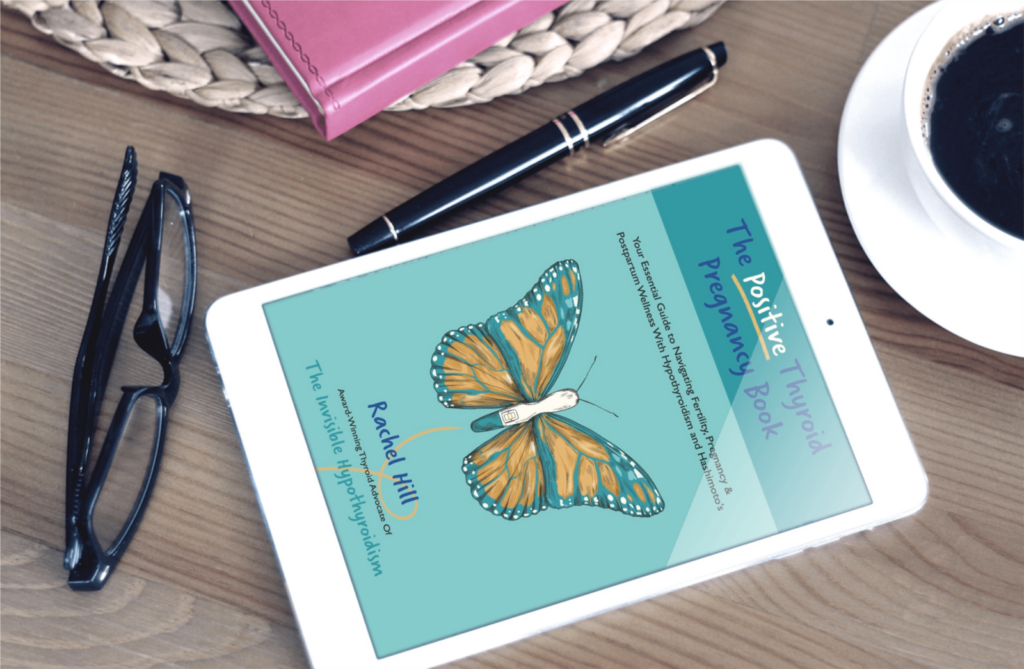
The Positive Thyroid Pregnancy Book: Your Essential Guide to Navigating Fertility, Pregnancy & Postpartum Wellness With Hypothyroidism and Hashimoto’s which covers Rachel’s full two pregnancies with hypothyroidism and Hashimoto’s, on Levothyroxine and Armour Thyroid NDT and everything YOU need to know for the best start for you and your baby.
References:
[1] https://www.ncbi.nlm.nih.gov/pubmed/22869843
[2] http://www.newswise.com/articles/mild-thyroid-dysfunction-in-early-pregnancy-linked-to-serious-complications
[3] https://www.liebertpub.com/doi/10.1089/thy.2014.0029
[4] https://www.ncbi.nlm.nih.gov/pubmed/31808375
[5] https://www.nhs.uk/conditions/pregnancy-and-baby/foods-to-avoid-pregnant/
[6] https://www.niddk.nih.gov/health-information/health-topics/endocrine/pregnancy-and-thyroid-disease/Pages/fact-sheet.aspx#pregnancy
[7] https://www.thyroid.org/wp-content/uploads/publications/ctfp/volume7/issue1/ct_public_v71_3.pdf
[8] https://pubmed.ncbi.nlm.nih.gov/2371025/


